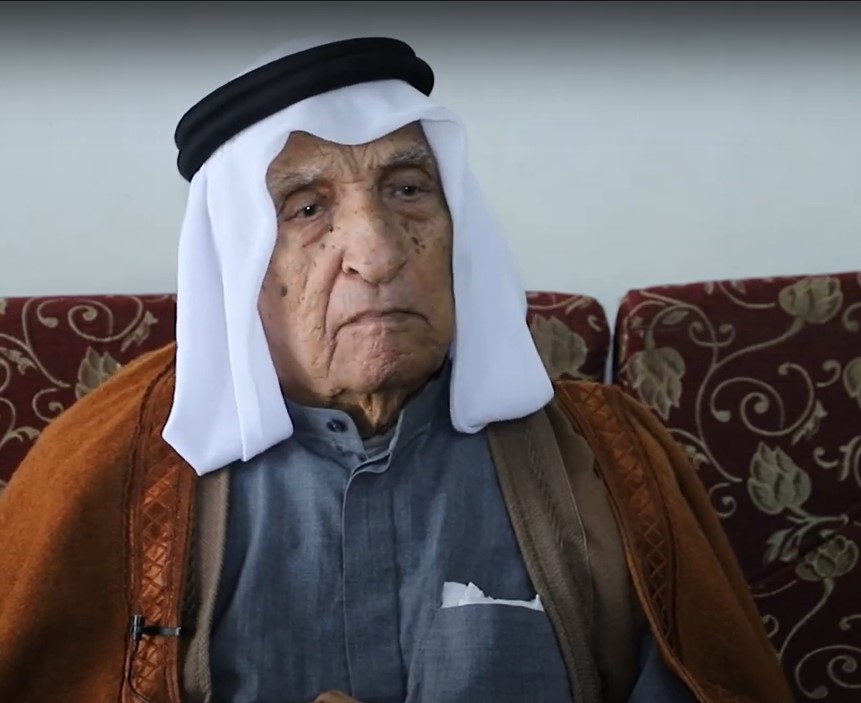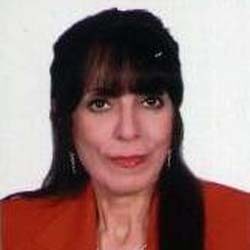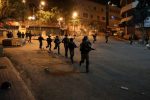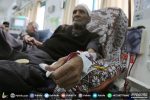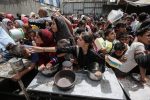“Just close the door and take the key. We will be back in just a few days” so many Palestinian families said to themselves when they were forcibly expelled from their land in 1948 but the days became decades yet after 74 years the hope of returning to their homeland has never been abandoned.
“This Key and Koshan (land title) I inherited from my parents means my dignity and my identity that I will never give up” says the 84-year-old Abu Salah AlHilo. “Even if I die before returning back I will bequeath it to my sons.”
Despite the fact that many of the Palestinian keys no longer belong to existing doors Palestinian refugees are still holding onto their keys. Possessing the key is like possessing an irrefutable document confirming ownership rights. “I also have photocopies of British and Ottoman land deeds” says Abu Salah.
Abu Salah is from the evergreen village Beit Jerja which they had to flee under Zionist gangs’ fire nearly 74 years ago. Beit Jerja was a Palestinian village 15.5 km northeast of Gaza. In 1931 the village consisted of 115 houses. The village is one of hundreds of Palestinian villages and towns depopulated and destroyed by Zionist militias in the last days of the British occupation of Palestine in October 1948. In an act of ethnic cleansing the Zionist forces completely destroyed 531 Palestinian villages. In 71 massacres 15000 Palestinians were murdered. 950000 Palestinians were also ejected from their homes. Some were made refugees in their own homeland in refugee camps throughout the West Bank Jerusalem and the Gaza Strip.
After seven decades of displacement Palestinians are numbered six million refugees. The keys of their front doors passed from one generation to the next along with the deeds. The key is a symbol of the gut-wrenching yearning and pain of being separated from home. Wooden keys were used before iron keys. The wooden key is fashioned with four holes in which four wooden sticks are placed. The iron key has a long wide shaft a single bit and a bow — where the key is held — with a slight double-curve at the bottom so it can be gripped firmly between two fingers and thumb.
“Looking at the key hanging on the wall heightened my sense of identity and right” says Abu Rami Abed Al-Hadi a second-generation refugee. Abu Rami’s original village is Kokaba. The destroyed village was located 25km from Gaza City. It included an archaeological site in which there was a basin cisterns foundations of buildings columns and capitals of broken columns. Kokaba is indicated to be identical to the Crusader site of Kamsa where archaeological tools were discovered. Zionist gangs occupied the village in October 1948. After establishing the “Kochav Michael” settlement Israeli settlers now are exploiting Kokaba’s farmlands for agricultural purposes.
After 74 years Abu Rami still has bittersweet memories about his original village as well as the way his parents were forced to flee. He remembers the story being narrated to him by his grandparents. “I never participated in activity held for Nakba or our right to return without holding the key to our home” he insists. “I always encourage the youth and kids to keep their Palestinian identity alive by holding more and more of awareness campaigns.” His wish is to live longer to see his occupied land free from the occupation.
It seems that the second third and fourth generations hold fast to the dream of return until their last breath even more than the first generation. The beginnings of a modern national consciousness dates back to the early 20th century. As national campaigns and activities began to emerge the right of return burrowed into the minds of Palestinians. Today the Key of Return is a popular symbol that can be found at all Palestinian activities. The key is present in national songs and it can be found in Palestinian art paintings and murals. For Palestinians the word ‘Nakba’ is intractably linked to the Key.
This decades-long series of protracted displacements and expulsions has led to more Palestinians holding their keys as they find themselves kicked out of their ancestral lands and it has never ended. The Palestinian Nakba persists as the occupation pursues new policies and methods of divesting the original occupants from their home. Nearly 12 Palestinian villages and towns are currently under the threat of ethnic cleansing and destruction subject to the system of apartheid which is designed specifically to push more and more Palestinians out of their rightful homes and to repopulate them with Israeli settlers. Masafer Yatta Sheikh Jarrah Silwan AlKhan AlAhmar Alaraqeeb and others are all facing immediate threat of ethnic cleansing under the occupation regime’s practice of land appropriation and displacement.

